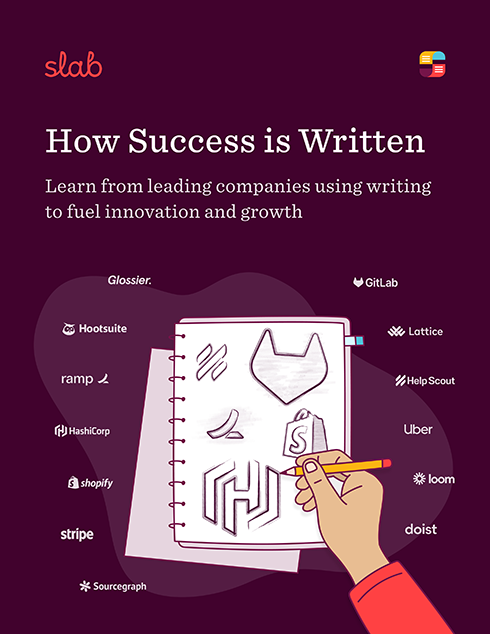One key, many copies: How Lattice uses knowledge-sharing to find success
At Lattice, the best thing to do with knowledge is share it.
Lattice is a tool built to help people succeed. The performance management and employee engagement software gives companies the infrastructure to develop and scale their people management strategy.
It’s no surprise that Lattice views knowledge-sharing through the lens of making employees successful. They’ve gotten to where they are today by documenting and sharing the decisions, processes, and lessons that have helped them grow, as individuals and as a company. If knowledge-sharing is the key to the company’s success, each employee has a copy of that key—and is expected to use it. Emily Smith, as the Chief of Staff, is the master key-holder at Lattice. She facilitates the flow of information, both among leaders and within teams.
“Companies can’t scale when important knowledge only exists in peoples’ heads. Decisions and the context around them get lost if they’re not written down.”
In the spirit of knowledge-sharing, we sat down with Emily to discuss how this ethos is implemented at Lattice—and how it’s helped them succeed.
Knowledge sharing is never done
"The mistake people make when it comes to documentation is they expect documentation exists for people to refer to over and over, forever and always." says Emily. In reality, the documentation should serve as a source of truth. It's particularly helpful for:
- Learning a new process (especially helpful when new people are onboarding)
- When changing a process, and you need to know the context of why a process is the way it is
- Understanding processes in other teams that are adjacent to yours
Emily is quick to add a caveat: “It’s not a replacement for knowledge. If someone needs to refer to documentation every time they do something, that process is too complicated,” she says.
Another challenge that many face when shaping how teams share knowledge: outdated information. According to Emily, it's pretty normal, "I think every wiki has out of date information." It's a part of the ever-evolving nature of knowledge.
At Lattice the whole team shares the responsibility of documenting and updating information, which lightens the load for individuals and gives the team ownership over their content. “There’s no single gatekeeper here. We’re big on using our wiki as a source of truth, and If someone finds something out of date, they’ll either update it themselves or contact the leader of that team to update it.”
Writing fuels decision-making
At Lattice, documentation is crucial to decision-making. “There are often scenarios when we need to go back and revisit important decisions to be able to understand our thinking at the time,” says Emily. When updating the company wiki, everyone is encouraged to keep the decision-making audience in mind:
- What context will people need?
- What are the main takeaways?
- What are the goals?
“When we approach documentation with the mindset that people will be seeking it out when they need help with decision-making, we’re more successful.”
Creating push-and-pull information frameworks
While creating the right information resources at Lattice is important, so is knowing how to distribute it. It’s not as simple as pushing out all new information at all times. All stats and information are useful on some level, but sometimes too much access can be a distraction. Knowing who needs what information to do their jobs, vs. what should be available is key to eliminating noise and empowering autonomy.
“We need to create the right push-and-pull frameworks for the information that’s critical for people in their roles.”
To help the Lattice team distribute knowledge effectively, the team has a few questions they ask before sharing information:
- Who is the main audience?
- Who may want to reference this information later?
For example: When rolling out a new process to Lattice’s sales team, the process will also influence the customer experience team, but it’s not essential to how they function day-to-day. The author should focus on tailoring the information to the sales team, and then leave it up to the customer experience leaders to decide how they’ll share it within their own team.
Ironing out these details ahead of time makes a huge difference in how knowledge is documented and distributed, and keeps the information-sharing process focused and streamlined.
Unlocking new ways to share knowledge
Lattice's culture of knowledge sharing expands beyond their own team, to their customers and the tech community as a whole. With a library of templates, ebooks, podcasts, and more, Lattice is committed to sharing learnings from their internal teams and customers.
Google popularized the OKR framework in 1999. The tech industry has learned a lot in 23 years about how to set goals, but as Emily points out, "Is that going to be the best way to set goals forever? Maybe not!" Sharing knowledge allows organizations like Lattice to learn together, but it also allows them to challenge their ways of thinking and grow over time.

